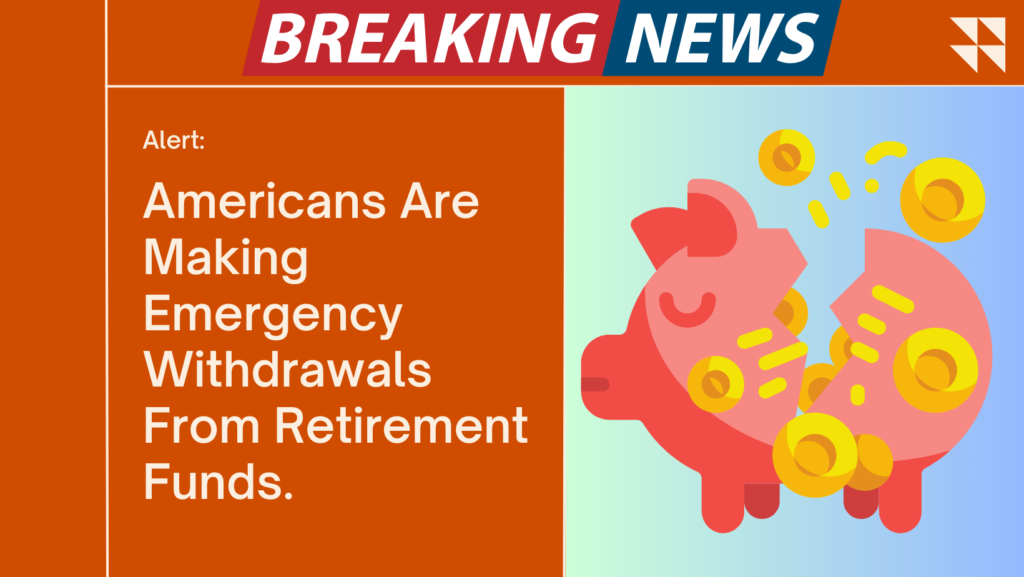In the face of economic turbulence and persistent inflation a recent Fidelity report, approximately 2.3% of workers with employer-sponsored 401(k) plans opted for “hardship”Emergency withdrawals during the three months from July to September 2023. This phenomenon sheds light on the financial challenges individuals are grappling with and the measures they are taking to address immediate and pressing needs.

Emergency Withdrawals: A Closer Look
Emergency withdrawals serve as a lifeline for those facing an immediate and substantial financial crunch. However, these withdrawals come with their own set of financial implications. Individuals making such withdrawals not only incur income tax on the withdrawn amount but also risk facing a 10% early withdrawal fee if they are under the age of 59½. The penalty, though, can be waived under specific circumstances, such as when the funds are earmarked for a qualified hardship like medical expenses.
Financial Impact and Trends
The average amount withdrawn, standing at about $5,070, mirrors patterns observed in both the second and first quarters. This steady increase in 401(k) withdrawals aligns with the prevailing economic challenges, particularly the soaring inflation that has significantly eroded the purchasing power of Americans. Economic events such as inflation and market volatility are leaving their mark on account balances, causing a subtle decline, while withdrawals and loans are on the rise.
Drivers Behind the Surge
Delving deeper into the Fidelity report reveals that the top two reasons compelling Americans to resort to Emergency withdrawals are the imminent threat of foreclosure or eviction and mounting medical expenses. These findings underscore the stark realities faced by a considerable portion of the population, navigating financial uncertainties in a landscape marked by rising living costs.
The Inflation Conundrum
With the government reporting a 3.2% rise in the consumer price index in October compared to the previous year, the impact of inflation on individuals’ financial stability is evident. While this figure represents a decrease from a peak of 9.1%, it remains above the pre-pandemic average. The domino effect is evident as Americans, facing diminished purchasing power, increasingly turn to their savings and, worryingly, accrue credit card debt to meet basic necessities.
The Alarming Rise in Credit Card Debt
Compounding the financial challenges is the escalating trend of Americans relying on credit cards to bridge financial gaps. Recent data from the Federal Reserve indicates a record surge in total credit card debt at the end of September, reaching levels not seen since 2003. The concerning aspect is the backdrop of astronomically high interest rates, exacerbating the financial burden on those already grappling with economic uncertainties.
Conclusion:
As the financial landscape undergoes seismic shifts, the surge in 401(k) Emergency withdrawals paints a vivid picture of the challenges faced by individuals navigating economic uncertainties, high inflation, and soaring living costs. This blog post has delved into the intricacies of these withdrawals, the driving forces behind them, and the broader economic trends shaping individuals’ financial decisions.
In the midst of these challenges, understanding the implications and seeking sustainable financial solutions becomes more crucial than ever. In conclusion, let us reflect on the significance of these trends, urging a collective effort to navigate the storms and safeguard the financial well-being of individuals across the nation.
